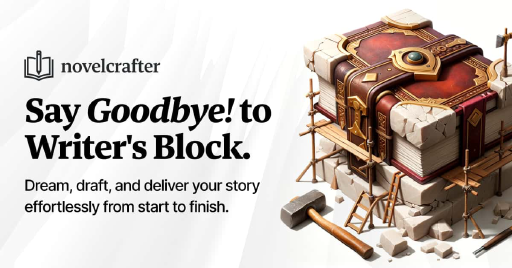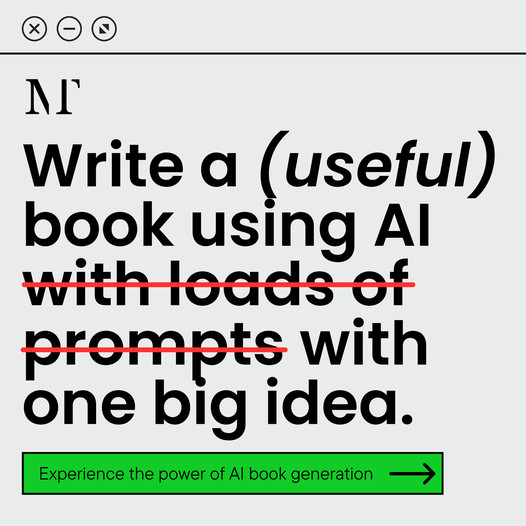Elements of a Compelling Story
Spinning a yarn folks want to hear ain’t just about cobbling together words. You gotta know the good stuff that makes a tale worth telling. Here’s the skinny on what makes a story pop and how you can whip up a plot that keeps folks turning pages.
Key Story Components
Every story worth its salt has five main ingredients: plot, setting, characters, point of view, and conflict. These bits and pieces work together to shape how your tale unfolds and keeps readers hooked.
| Key Component | What’s It All About |
|---|---|
| Plot | The series of events that move your story along. |
| Setting | When and where your story takes place, setting the stage for everything else. |
| Characters | The folks making things happen, each with their own reasons and woes. |
| Point of View | The vantage point from which the tale is told, coloring how readers see the story. |
| Conflict | The hurdles your characters face, driving the action and keeping things tense. |
These parts work in tandem to keep folks engaged and tied to the story’s heartbeat. If you’re keen to spruce up your writing chops, you might check out some beginner writing tips or dive into some creative writing exercises.
Plot Development
A solid plot ain’t just thrown together. It’s like a roller coaster with its ups and downs: exposition, rising action, climax, falling action, and resolution. Each bit plays its part in crafting a tale worth remembering.
| Plot Stage | What’s Happening |
|---|---|
| Exposition | Meet the main players, setting, and the starting scene. |
| Rising Action | Stuff starts happening, cranking up the tension. |
| Climax | The big moment where things get intense. |
| Falling Action | Tying up the loose ends post-climax. |
| Resolution | Wrapping things up, smoothing out wrinkles, and saying goodbye. |
Knowing this stuff helps you spin a yarn that’ll stick. For tips on putting together a knockout plot, wander over to our guide on how to create a compelling plot. As you weave your story, remember the plot’s there to shine a light on your themes; check out theme development to really nail it down.
By zeroing in on these nuts and bolts, you’ll lay the groundwork to turn up your storytelling game. Run with these ideas and take a gander at ways to write better stories.
Importance of Storytelling
Storytelling isn’t just a trick up the writer’s sleeve; it’s the heart and soul of communication. More than just amusing tales, it sways minds, stirs feelings, and builds bridges between folks and the stories they hear.
Impact of Effective Storytelling
Good storytelling? It’s like the super glue for grabbing attention. It takes big ideas and turns them into easy-to-swallow pieces, like a spoonful of sugar helping the medicine go down. When you weave together an intriguing story, you invite readers on a journey down memory lane, triggering their personal stash of emotions and thoughts. This personal touch can linger, leaving readers with memories that stick like gum on a railing, making your message hard to forget.
And it’s not just about having fun. Storytelling is a big cheese in schools and whatever field you name, even science. Think about it – more and more scientists are jumping on the storytelling bandwagon to make their complex findings hit home and be a bit more down-to-earth, as per NCBI PMC.
Neurological Responses to Stories
Ever wonder what goes on upstairs when you hear a gripping story? Turns out, stories pack a punch right to our brain cells. Prof. Uri Hasson’s research shows how our gray matter lights up in sync when we’re tuned into a narrative. And what gets the neurons really dancing are the juicy bits of the story, not just the blah, blah, blah sound waves (NCBI PMC).

What Poetry Feels Like
This brainwave harmony means a well-spun yarn can get folks on the same wavelength. It’s like a neural kumbaya moment where everyone’s brain is singing from the same hymn sheet, boosting how well you get each other – perfect when knowing the inside jokes after the yarn (NCBI PMC).
With these brainy insights, you can turbocharge your narrative skills. Connect and share with killer stories that hit hard and resonate. Wanna up your game? Check out our beginner writing tips and practice getting into the writing groove.
Crafting Memorable Characters
Turning mere words into characters that pop off the page is the secret sauce of storytelling. Whether they’re the hero everyone roots for or the villain folks love to hate, getting your character just right is key to pulling readers into your world.
Building Character Depth
To get readers hooked on your characters, you’ve gotta give them some depth. Characters with layers are the ones that folks remember. Here’s how to make sure your characters leave a lasting impression:
-
Background: Think of their backstory as the cheat sheet to their personality. Where they came from, what they’ve been through, and just who they are at their core. You want details that’ll explain why they do what they do.
-
Goals and Motivations: What’s in it for them? Whether they’re out for revenge, chasing love, or just trying to get a second chance, understanding their “why” is crucial. Their goals are like the rails their train of thought rides on.
-
Flaws and Strengths: Perfect people? Boring! Give your characters flaws for a touch of realism and strengths to root for. It’s this mix that makes them feel lifelike and relatable.
-
Voice and Dialogue: Give characters their own way of speaking. The way someone talks says a lot about them. So, mix up vocab, throw in some dialect…turn their words into a mirror of their past, a fingerprint that’s just for them (The Novelry).
| Character Aspect | Example |
|---|---|
| Background | A kid from a rough neighborhood might hustle differently than one who had it easy. |
| Goals | Saving their family from eviction might push one character to do the unthinkable, while another might chase celebrity status. |
| Flaws | A character with trust issues will keep readers guessing—and add plenty of juicy tension. |
| Voice | A techie might toss out words only other geeks understand. |
Got more ideas brewing? Dive deeper with this guide on how to create realistic characters.
Character Conflict
The heart of any good story? Conflict. It’s the thing your main character has to wrestle with, kick-starting all those juicy plot twists (Prodigy Game).
-
Character vs. Self: Ideal for creating nail-biting tension. Picture your character fighting their inner demons, whether it’s doubts, fears, or some heavy moral choice they have to face.
-
Character vs. Character: Nothing like a good old rivalry to heat things up. Characters clashing push the story forward, each driven by their own needs and desires.
-
Character vs. Nature: Whether they’re up against a hurricane or just trying to survive a chilly night with a flimsy tent, Mother Nature’s a formidable foe.
-
Character vs. Society: How would your character react to being told they can’t do something? Societal pressures often trigger rebellion, questioning of values, and sparks flying.
Making conflicts emotionally gripping should be your top goal. Tap into themes like survival, loss, and redemption to hit your readers right in the feels (Anecdote).
Explore more of these storytelling elements with creative writing exercises or check out tips for writing a novel. These tools will help you become the puppet master of your characters and tug at your readers’ heartstrings.
The Power of Setting
Think about the backdrop in your favorite stories. That’s setting—where and when the magic happens. It’s the stage for the drama, laughter, and tears. Get it right, and the setting can steal the show, pulling every reader into the heart of your tale.
Setting Creation
Putting together a killer setting is like whipping up grandma’s secret sauce—throw in familiarity and spice it with detail. You can conjure places you’ve walked through or dig around for facts to make them believable (thanks for the tip, TCK Publishing). From Narnia-like lands to the groovy vibes of the 60s, a well-built backdrop can elevate your plot game to the next level.
| Aspects of Setting | Description |
|---|---|
| Location | Where all the fun (or trouble) happens |
| Time Period | Are we in the Roaring Twenties or tomorrow’s world? |
| Cultural Context | What do the peeps believe, do, and enjoy? |
| Atmospheric Elements | Is it a sunny day or a foggy, moody night? |
Setting doesn’t just sit there, it pushes forward the action, tossing hurdles right in your characters’ paths. It’s like giving them a tricky puzzle tied deeply to where they are (TCK Publishing).
Incorporating the Five Senses
Make your setting pop using the good ol’ five senses shuffle—seeing, hearing, sniffing, tasting, and touching. That’s how to make readers feel they’re right there with your gang (TCK Publishing).
| Sense | Descriptive Elements |
|---|---|
| Sight | The rain on the leaves or the neon lights blinking |
| Sound | Birds chirping or the eerie silence creeping in |
| Smell | Fresh baked goods or the city’s hustle and bustle stink |
| Taste | Grandma’s apple pie or the salty breeze from the ocean |
| Touch | The chill of morning frost or the velvet softness of petals |
Slide in those sensory tidbits, and you’ll whisk readers away with your words. Instead of just teling them the scene, let them see through your characters’ eyes—show them the story vibes (TCK Publishing).
Once you hone your setting skills, your tales will carry your audience away. Hungry for more tips? Check out some neat pointers on writing better stories, or get started with our beginner writing tips and novel writing advice.
Livening Up Your Characters’ Chatter
Nailing dialogue is like a secret sauce for your stories. Get those conversations popping, and watch your tale come to life.
Crafting Engaging Dialogue
Talking in books ain’t the same as chit-chatting in real life. It’s gotta move things along and let us peek into folks’ heads. Aren’t we all bored of those “he said, she said” back-and-forths with no spark? Give each character a mission. When their chats clash, it’s pure storytelling gold.
Here’s the lowdown on making your dialogue work:
| Key Things to Keep in Mind | What’s That About? |
|---|---|
| Purpose | Don’t let folks yak just to kill time. Their words should show feelings, spill beans, or push the story ahead. |
| Subtext | People rarely say exactly what they mean. Slip in some double meanings for extra flavor. |
| Natural Flow | Mimic real chat but skip the um’s and uh’s. Keep it real but readable. |
Remember, using contractions makes folks sound like they’re talkin’, not deliverin’ a speech. Keep it cozy and casual-like.
Varying Character Voices
Wanna make your dialogue more believable? Give your characters some vocal personality. Play around with how they speak based on what they’ve been through and where they come from.
| Character Trait | Mix It Up Like This |
|---|---|
| Education Level | Toss in fancy words or street slang, whatever fits their story. |
| Tone | Some might get right to the point, while others dance around it. |
| Speech Patterns | Everyone’s got their quirks. Let your character’s personal style shine through. |
Say you’ve got a high-flyer – they might talk all posh and proper. But a down-to-earth character? They’ll keep it simple and maybe toss in some everyday lingo. Make sure each person’s words are as unique as they are.
Gettin’ these dialogue tricks down pat will amp up your story’s vibe and suck readers right in. Want more? Check out our guides on how to create realistic characters and tips for writing dialogue.
Connecting Theme and Plot
Writing stories that grab readers by aligning theme and plot is a game-changer. Nail this, and you’re on your way to storytelling greatness.
Plot-Theming Alignment
Think of theme and plot like a dance duo—theme spins the philosophical or emotional truth, while plot leads with action-packed moves. The balance between these two can make your story buzz with energy (Helping Writers Become Authors).
To keep your plot and theme harmonized, try these tips:
| Aspect | Description | Tips |
|---|---|---|
| Theme | The big idea or life lesson | Pin down your main messages before plotting anything else. |
| Plot | The sequence of juicy events | Make sure these moments are packed with decisions that showcase your theme. |
| Character Actions | Choices your characters make | Let their decisions connect solidly with your theme to shape powerful journeys. |
Every plot twist, decision, and action ought to reinforce your theme. When characters hit forks in the road and make decisions, it’s their chance to give a nod, whether subtle or obvious, to your thematic message. This way, your story weaves together in a way that pulls readers right in.
Theme Development
A rich theme isn’t just decoration—it’s the heart and soul of your story. It shapes your plot and brings depths to the action. Want to get your theme into top form? Try these strategies:
- Pin Down Core Ideas: Figure out what big themes you want to explore. They could be anything, from love’s messy complications to the grit of resilience.
- Symbols Galore: Use symbols and motifs that vibe with your theme. They add texture and layers to your storytelling.
- Relationships Matter: Create connections between your characters that shine a spotlight on the theme. Whether they clash or bond, these interactions should mirror the bigger picture.
- Wrap-Up Wisdom: Finish strong by having your story’s conclusion echo the theme. Leave readers chewing on the truths you’ve shared.
When your theme seeps into every corner of your narrative, your story will hum with authenticity and stay on readers’ minds long after they’ve turned the last page. For more storytelling skills, hop over to our guides on how to outline a story and how to improve writing skills.


